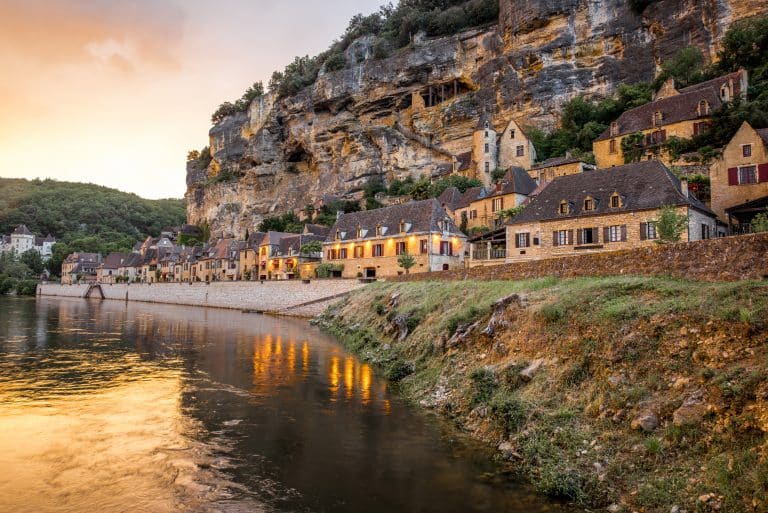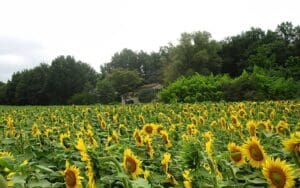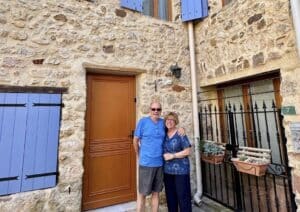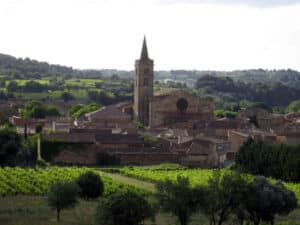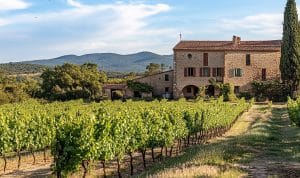The Dordogne is a place that proudly resists the pressures of modernization, instead holding tight to its rich heritage.

The region is predominantly rural, making it an idyllic escape. Many are drawn to its natural parks and charming medieval villages like Sarlat-la-Canéda.
Its also home to awe-inspiring prehistoric caves such as Lascaux.
As if the history alone isn’t enough, Dordogne also offers a culinary journey, with traditional dishes that honor the local terroir. Now, let’s dive deeper into what makes this place truly special.
Foie Gras: The Crown Jewel of Dordogne Cuisine
Foie gras is synonymous with the Dordogne. In fact, 79% of the world’s foie gras is made in France, with 90% of producers residing in the Dordogne Valley. It is a controversial dish, with some regaling in this delicacy, and others vehemently opposed to “gavage” or force-feeding. A chacun son goût. (To each his own).
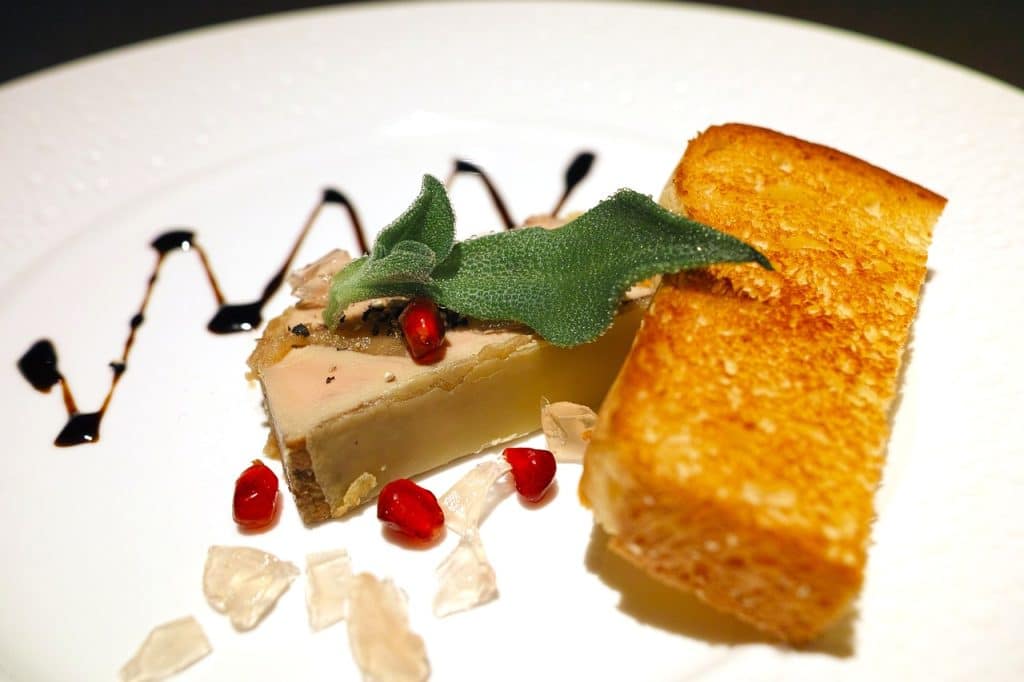
French law governs the process of foie gras production, ensuring the birds are not harmed. Farmers are passionate about their foie gras, and place the highest priority on the well-being of their livestock. They take pride in the stress-free life they give to their geese compared to other chemical-fed, factory-produced poultry that don’t have the luxury of a free-range upbringing.
A bit of History:
Foie gras farming originated with the Egyptians, who observed that ducks and geese preparing for autumn migration overate maize and other crops, developing large, nutrient-rich livers. This practice, widely adopted in rural areas, was essential to ensuring a a meat supply at a time when there were no freezers.
Tasting:
For those who opt to try, there are many options available: it can be sold whole, prepared into a mousse, parfait or pâté. If you buy a block of ‘mi-cuit’, make sure you cut it with a warm knife and serve it up cold with a slice of thick walnut bread and a dollop of fig jam. Accompany this dish with a local wine to further enhance the flavors!
Truffles: The Black Diamonds of Périgord
Dordogne’s Périgord Noir area is famous for its black truffles, (Tuber Melanosporum) considered to be the most fragrant of all truffles. These “black diamonds” are harvested any time between mid-November and mid-March, depending on conditions and the truffle species. The truffles grow underground and form a symbiosis with the tree, usually a holm oak or a white oak. This means that the truffle derives sugar from the tree, and in return the fungus boosts the ability of the tree’s roots to absorb mineral salts and water from the soil.
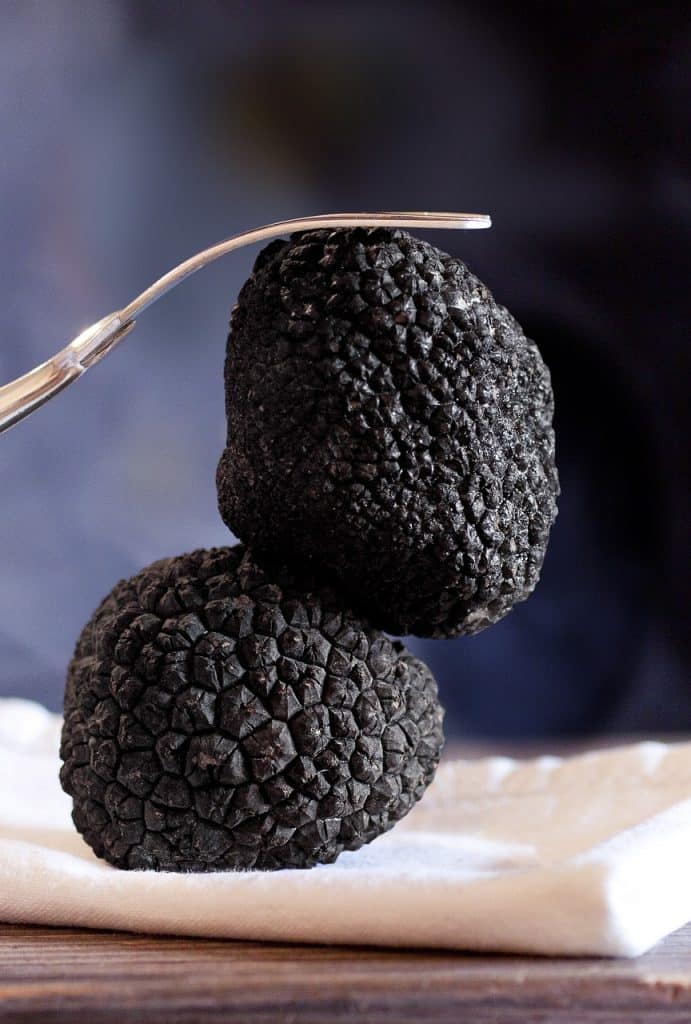
For an unforgettable experience, try your hand at truffle hunting. While these are the most aromatic of truffles, humans can’t smell them underground, so a dog or pig is required to locate them. Places like Domaine de Lascaux guide you every step of the way, and reward your efforts with either a tasting or a full truffle dinner.
If you are visiting outside of truffle season, fear not, there are five floors dedicated to the black truffle in the Musée de la Truffe, housed in a 15th-century building in Sarlat-la-Canéda.
https://www.museedelatruffe.com
Walnuts and Walnut Oil
The Dordogne Valley is the biggest regional producer of walnuts in France, featuring four varieties – Marbot, Corne, Granjean and Franquette – with an AOP label. Walnuts are used in everything from salads to desserts, and their oil is a prized ingredient in local kitchens. Don’t miss tasting the traditional gâteau aux noix (walnut cake), a sweet treat that highlights the nut’s natural richness. If you need more encouragement to indulge, they are incredibly good for you as walnuts are rich in fiber, Omega 3 and Omega 6, vitamins, magnesium, iron, phosphorus and manganese.
For those who are truly nuts about walnuts, (I couldn’t resist) you can follow La Route de la Noix, a driving route that leads you to producers, mills, distilleries, restaurants, farm-hostels, and artisans involved in its cultivation.
Duck and Goose Confit
Another hallmark of Dordogne’s cuisine is confit de canard or confit d’oie. This slow-cooked dish involves salting and then cooking duck or goose in its own fat, resulting in tender, flavorful meat. Served with crispy potatoes, it’s a hearty and satisfying meal that reflects the region’s rustic charm.
Périgord Salad
As most of the dishes are rich and a bit heavy, let’s explore a lighter option, the Périgord salad (Salade Périgourdine). This quintessential dish is a harmonious blend of local ingredients, combing fresh greens, walnuts, slices of duck breast, and often foie gras. It’s a perfect starter or a standalone dish for a sunny day.
Try your own with this recipe: https://www.traditionalfrenchfood.com/perigord-salad.html
Cabécou Cheese
Cheese lovers will delight in cabécou, a small round goat cheese with a creamy texture and slightly tangy flavor. Made with raw milk, the cheese is dipped in plum brandy and sprinkled with coarse black pepper before it is wrapped in two chestnut leaves for maturation. Originating from Périgord, this cheese derives its name from the words “cabre” and “cou”, which literally means “little goat”. It is often served as part of a cheese platter or baked with honey and walnuts for a delectable appetizer.

Bergerac Wines
Bergerac is a wine region and appellation located along the Dordogne river. Its wines, made from grape varieties like Cabernet Sauvignon, Merlot, Sauvignon Blanc, and Semillon, share a similar style to those of Bordeaux, which lies about 100 kilometers (60 miles) to the west. While there are several AOP wines, including reds, whites and rosés, the most famous appellation is Monbazillac: a sweet white wine. Experience this exceptional wine in the 16th century castle of the same name.
Chateau Monbazillac
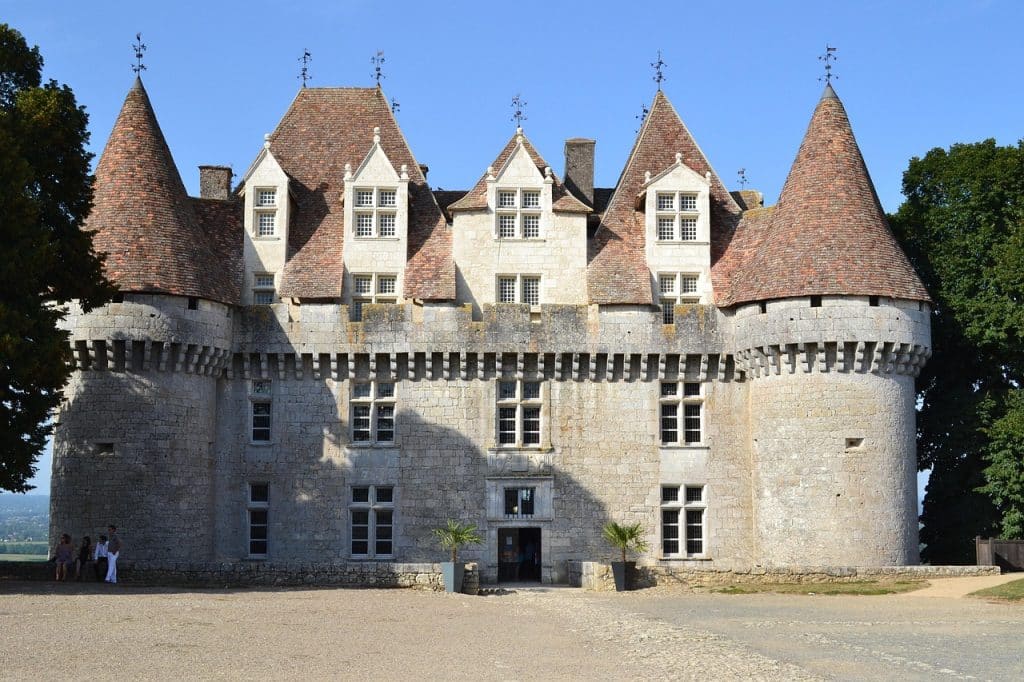
https://chateau-monbazillac.com/
Pairing these wines with local dishes elevates the dining experience and enhances the flavor of both the food and the wine. What grows together, goes together!
Sweets and Pastries
While winter brings truffles, summer brings cherries. Clafoutis, a baked custard overflowing with cherries, is a popular dessert in Dordogne for this reason. Light and fruity, it makes the perfect ending to a summer picnic. For fall or winter, opt instead for a heartier tarte aux noix (walnut tart). Both of these confections highlight the region’s love for simple yet flavorful ingredients. Try making your own clafoutis this summer with this recipe from the Dordogne.
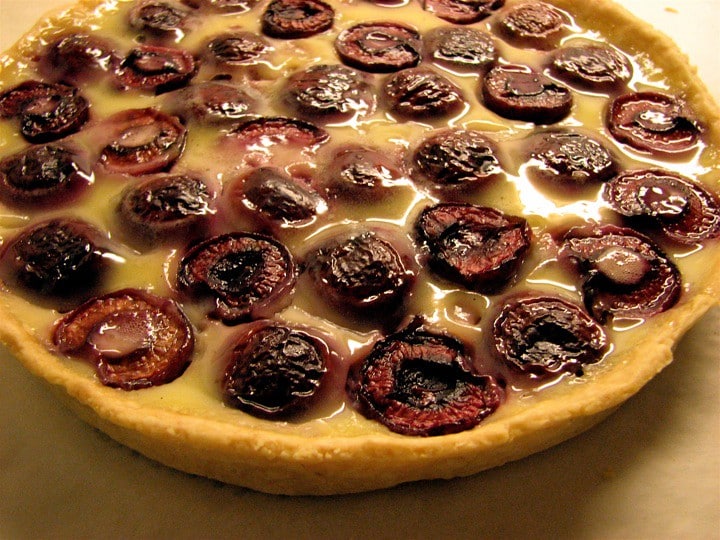
https://www.dordogne-life.com/latest-blogs/fresh-cherry-clafoutis
Tips for Exploring Dordogne’s Culinary Scene
- Visit Local Markets: Towns like Sarlat and Périgueux host vibrant markets where you can sample and purchase local specialties.
- Seasonal Delights: Plan your visit around the truffle season in winter, the abundant cherries in spring, or walnut harvest in autumn for a truly immersive experience.
- Festival du Livre Gourmand: This unique festival, dating back to 1990, brings food writers from France and beyond to Périgueux in November for cooking demonstrations, workshops and debates.
The Dordogne region’s culinary treasures are a reflection of its rich history and fertile land. From luxurious foie gras to decadent walnut tart, every dish tells a story of tradition and passion. Whether you’re dining in a Michelin-starred restaurant or enjoying a rustic meal in a countryside inn, Dordogne promises a feast for the senses.


